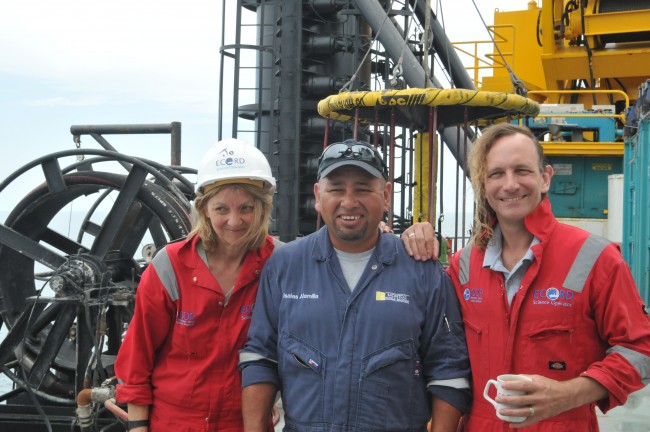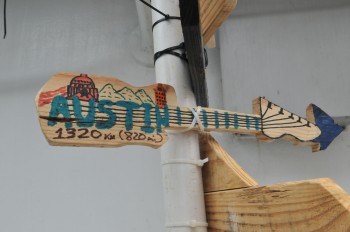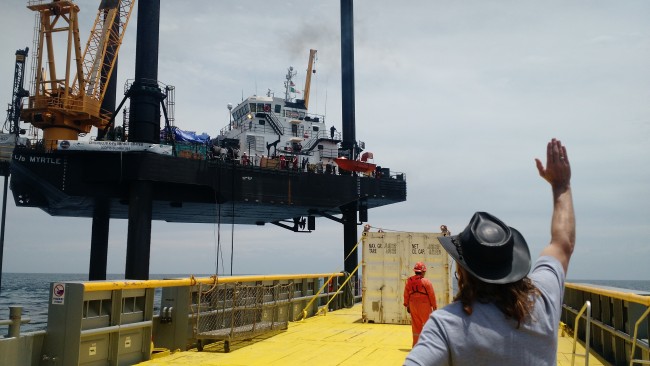No Core Today, But Plenty of History
May 14, 2016

Today on the ferry to L/B Myrtle the drill manager came to me and my co-travellers with bad news. The drill bit had worn out again and needed to be replaced – a task that requires pulling up over 860 feet of drill pipes, one by one, back up through the borehole.
We weren’t going to be seeing any fresh core today.
I was disappointed. Today is my last day day reporting from the Chicxulub impact crater, and I really wanted to be able to capture the moment the core came to the surface, and the bustle of scientific analysis that followed.
But not having a core to report on was an opportunity to spend more time with co-principal investigators Sean Gulick (Jackson School) and Joanna Morgan (Imperial College London) to learn how, after 18 years of trying, the Chicxulub expedition finally happened.
In 1998, Morgan,an impact geophysicist, made the first proposal to drill the crater’s impact center. She had seismically surveyed parts of the Chixulub crater three years prior, and was emboldened by research over the past decade that indicated that the mass extinction event that killed the dinosaurs was caused by an asteroid, and that Chicxulub was ground zero.
However, her proposal to the International Ocean Discovery Program asking for hundreds of millions of dollars to drill multiple core boreholes into the crater’s center was shot down.
Morgan decided that more geophysical data on the crater site needed to be collected before submitting another proposal. Her research colleague Gail Christeson, a geophysicist at the Jackson School’s Institute for Geophysics, introduced her to Gulick, who had experience conducting detailed geophysical surveys of the Gulf of Mexico.
In 2005 Morgan and Gulick worked together to conduct a detailed seismic survey of the parts of the crater located offshore of the Gulf of Mexico. The survey resulted in data that showed geologic formations in the crater, including the peak ring at its epicenter.
The data led to Morgan, Gulick and others submitting a proposal in 2008 to the IODP, which was gradually revised over the years through workshops, conferences and meetings, until April 2015, when the IODP agreed to support a mission to drill a single borehole into the Chicxulub peak ring.

Since April of this year, that’s exactly what the team has been doing, with Gulick and Morgan never leaving the Myrtle for the nearly two months it has been suspended above the sea.
That changed today, when Gulick left the Myrtle. He’s returning to Austin to hear his PhD students’ defenses, attend his son’s college graduation, and teach a field course in marine geology and geophysics to Jackson School undergraduates.
Although he was in good spirits while leaving the Myrtle, he said is was a strange feeling to be looking up at the boat from the deck of another vessel.
But he’ll be reunited with the research team–and the cores–before the year is through. Drilling Chicxulub is just the recovery stage of the research. The entire science party will convene in September in Bremen, Germany to sample and study the core in more detail, and delve even deeper into the expedition that took close to two decades to happen.

